Toxoplasma ROP16I/III ameliorated inflammatory bowel diseases via inducing M2 phenotype of macrophages
- PMID: 31832003
- PMCID: PMC6906210
- DOI: 10.3748/wjg.v25.i45.6634
Toxoplasma ROP16I/III ameliorated inflammatory bowel diseases via inducing M2 phenotype of macrophages
Abstract
Background: Inflammatory bowel disease (IBD) is characterized by chronic and non-specific inflammation of the intestinal mucosa and mainly includes ulcerative colitis and Crohn's disease.
Aim: To explore the beneficial effect of ToxoROP16I/III-induced M2 phynotype macrophages in homeostasis of IBDs through downregulation of M1 inflammatory cells.
Methods: RAW264.7 macrophages stimulated by lipopolysaccharide (LPS) (M1 cells) were co-cultured with Caco-2 cells as an inflammatory model of IBD in vitro. The expression of ToxoROP16I/III was observed in RAW264.7 macrophages that were transfected with pEGFP-rop16 I/III. The phenotypes of M2 and M1 macrophage cells were assessed by quantitative real-time reverse transcriptase polymerase chain reaction and the expression of tumor necrosis factor (TNF)-α, interleukin (IL)-1β, IL-6, transforming growth factor (TGF)-β1, IL-10, inducible nitric oxide synthase (iNOS), and arginase-1 (Arg-1) was detected. The expression of iNOS, Arg-1, signal transducer and activator of transcription 3 (Stat3), p-Stat3, Stat6, p-Stat6, programmed death ligand-2 (PD-L2), caspase-3, -8, and -9 was analyzed by Western blotting, and Griess assays were performed to detect nitric oxide (NO). TNF-α, IL-1β, IL-6, TGF-β1, and IL-10 expression in the supernatants was detected by enzyme-linked immunosorbent assay, and Caco-2 cell apoptosis was determined by flow cytometry after mixing M1 cells with M2 cells in a Caco-2 cell co-culture system.
Results: M1 cells exhibited significantly increased production of iNOS, NO, TNF-α, IL-1β, and IL-6, while ToxoROP16I/III induced macrophage bias to M2 cells in vitro, showing increased expression of Arg-1, IL-10 and TGF-β1 and elevated production of p-Stat3 and p-Stat6. The mixed M1 and M2 cell culture induced by ToxoROP16I/III exhibited decreased production of NO and iNOS and upregulated expression of Arg-1 and PD-L2. Accordingly, Caco-2 cells became apoptotic, and apoptosis-associated proteins such as caspase-3, -8 and -9 were dampened during co-culture of M1 and M2 cells. Flow cytometry analysis showed that co-culture of M1 cells with Caco-2 cells facilitated the apoptosis of Caco-2 cells, but co-culture of M1 and M2 cells alleviated Caco-2 cell apoptosis.
Conclusion: ToxoROP16I/III-induced M2 macrophages inhibited apoptosis of Caco-2 cells caused by M1 macrophages. This finding may help gain a better understanding of the underlying mechanism and represent a promising therapeutic strategy for IBDs.
Keywords: Alternatively activated macrophages; Caco-2; Classically activated macrophages; Immunity; Inflammatory bowel disease; Toxoplasma ROP16I/III.
©The Author(s) 2019. Published by Baishideng Publishing Group Inc. All rights reserved.
Conflict of interest statement
Conflict-of-interest statement: None of the authors has any conflicts of interest to declare.
Figures
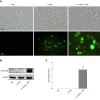

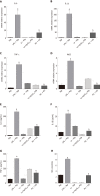
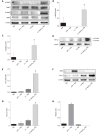
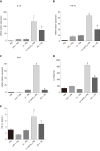

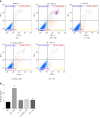

Similar articles
-
[Effects of Toxoplasma gondii type I/II rhoptry protein 16 on the polarization and inflammatory response of mouse alveolar macrophages].Zhongguo Xue Xi Chong Bing Fang Zhi Za Zhi. 2025 Mar 18;37(2):127-135. doi: 10.16250/j.32.1915.2024199. Zhongguo Xue Xi Chong Bing Fang Zhi Za Zhi. 2025. PMID: 40425495 Chinese.
-
The pentacyclic triterpene Lupeol switches M1 macrophages to M2 and ameliorates experimental inflammatory bowel disease.Int Immunopharmacol. 2016 Jan;30:74-84. doi: 10.1016/j.intimp.2015.11.031. Epub 2015 Dec 3. Int Immunopharmacol. 2016. PMID: 26655877
-
Pyropia yezoensis glycoprotein promotes the M1 to M2 macrophage phenotypic switch via the STAT3 and STAT6 transcription factors.Int J Mol Med. 2016 Aug;38(2):666-74. doi: 10.3892/ijmm.2016.2656. Epub 2016 Jun 24. Int J Mol Med. 2016. PMID: 27353313
-
Current Status of M1 and M2 Macrophages Pathway as Drug Targets for Inflammatory Bowel Disease.Arch Immunol Ther Exp (Warsz). 2020 Apr 1;68(2):10. doi: 10.1007/s00005-020-00576-4. Arch Immunol Ther Exp (Warsz). 2020. PMID: 32239308 Review.
-
Macrophage Polarization: Different Gene Signatures in M1(LPS+) vs. Classically and M2(LPS-) vs. Alternatively Activated Macrophages.Front Immunol. 2019 May 24;10:1084. doi: 10.3389/fimmu.2019.01084. eCollection 2019. Front Immunol. 2019. PMID: 31178859 Free PMC article. Review.
Cited by
-
The ArgR-Regulated ADI Pathway Facilitates the Survival of Vibrio fluvialis under Acidic Conditions.Int J Mol Sci. 2024 May 23;25(11):5679. doi: 10.3390/ijms25115679. Int J Mol Sci. 2024. PMID: 38891866 Free PMC article.
-
Astragaloside promotes the secretion of MSC-derived exosomal miR-146a-5p by regulating TRAF6/NF-κB pathway to attenuate inflammation in high glucose-impaired endothelial cells.In Vitro Cell Dev Biol Anim. 2025 Jan;61(1):93-106. doi: 10.1007/s11626-024-00984-2. Epub 2024 Oct 23. In Vitro Cell Dev Biol Anim. 2025. PMID: 39441504
-
Blockage of Galectin-Receptor Interactions Attenuates Mouse Hepatic Pathology Induced by Toxoplasma gondii Infection.Front Immunol. 2022 Jul 1;13:896744. doi: 10.3389/fimmu.2022.896744. eCollection 2022. Front Immunol. 2022. PMID: 35911679 Free PMC article.
-
Exploring the potential of Toxoplasma gondii in drug development and as a delivery system.Exp Mol Med. 2024 Feb;56(2):289-300. doi: 10.1038/s12276-024-01165-7. Epub 2024 Feb 1. Exp Mol Med. 2024. PMID: 38297164 Free PMC article. Review.
-
Exosome-mediated macrophage regulation for inflammatory bowel disease repair: a potential target of gut inflammation.Am J Transl Res. 2023 Dec 15;15(12):6970-6987. eCollection 2023. Am J Transl Res. 2023. PMID: 38186999 Free PMC article. Review.
References
-
- Markowitz J, Grancher K, Kohn N, Daum F. Immunomodulatory therapy for pediatric inflammatory bowel disease: changing patterns of use, 1990-2000. Am J Gastroenterol. 2002;97:928–932. - PubMed
-
- Ananthakrishnan AN. Epidemiology and risk factors for IBD. Nat Rev Gastroenterol Hepatol. 2015;12:205–217. - PubMed
-
- Cader MZ, Kaser A. Recent advances in inflammatory bowel disease: mucosal immune cells in intestinal inflammation. Gut. 2013;62:1653–1664. - PubMed
-
- Kim JK, Jun JG. Ailanthoidol suppresses lipopolysaccharide-stimulated inflammatory reactions in RAW264.7 cells and endotoxin shock in mice. J Cell Biochem. 2011;112:3816–3823. - PubMed
MeSH terms
Substances
LinkOut - more resources
Full Text Sources
Research Materials
Miscellaneous

